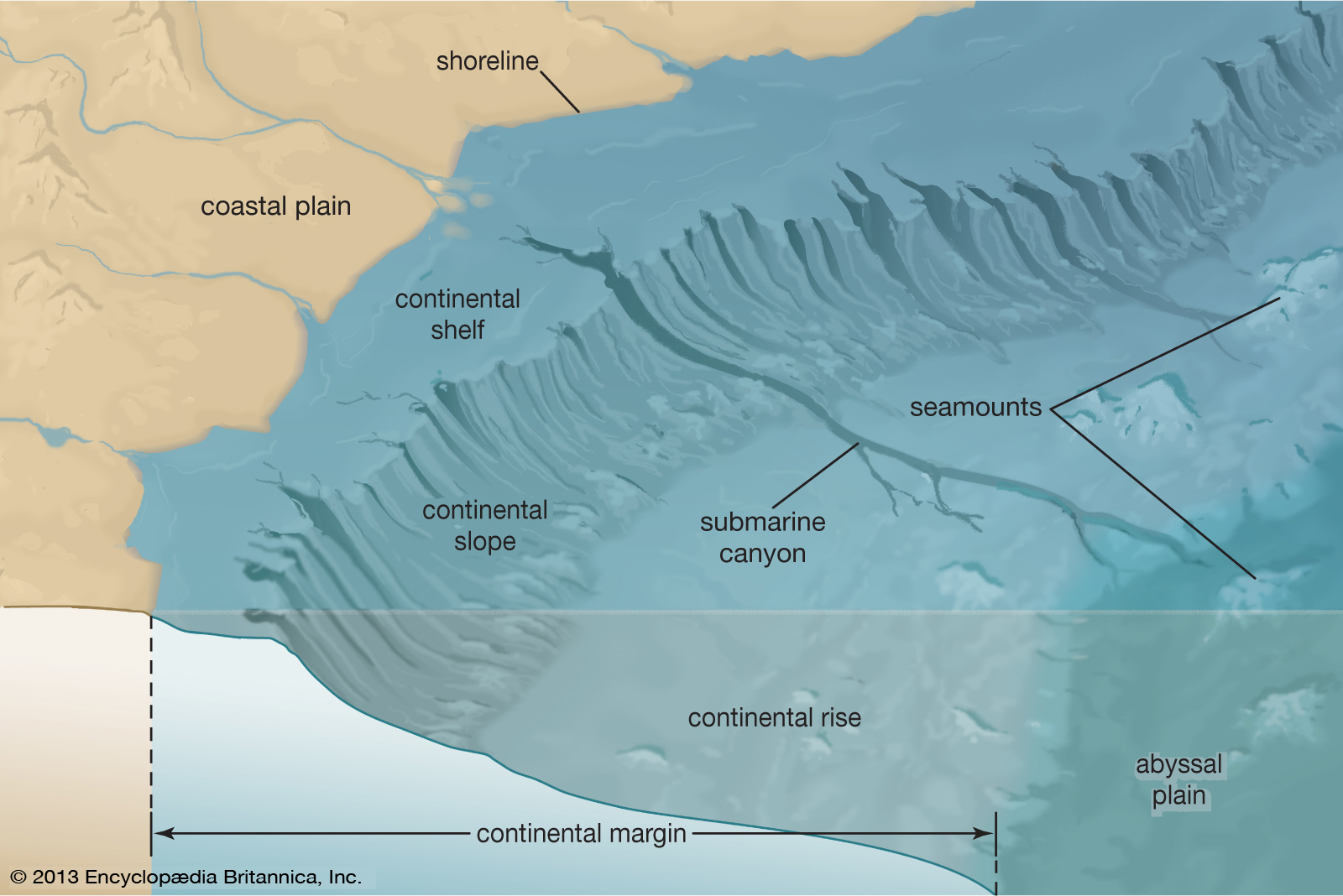As used in UNCLOS Articles 76(3) and 76(6), “rise,” i.e., the “continental rise,” is a submarine feature which is that part of the continental margin lying between the continental slope and the deep ocean floor. It usually has a gradient of 0.5 degrees or less and a generally smooth surface consisting of sediment.
Comment
In LOAC-governed situations under the “other rules of international law” clauses in UNCLOS, a different definition may apply. The same may be the situation if the UN Charter supersedes UNCLOS or if jus cogens norms apply.
Consolidated Glossary ¶ 20 defines the “continental rise” as a “submarine feature which is that part of the continental margin lying between the continental slope and the deep ocean floor; simply called the Rise in [UNCLOS]. It usually has a gradient of 0.5E or less and a generally smooth surface consisting of sediment.” Former Glossary ¶ 20 defined the “continental rise” as “[a] submarine feature which is a part of the continental margin lying between the continental slope and the abyssal plain. It is usually a gentle slope with gradients of 1/2 degree or less and a generally smooth surface consisting of sediments.”
UNCLOS Article 76(3) defines the continental margin as “the submerged prolongation of the land mass of the coastal State, and consist[ing] of the seabed and subsoil of the [continental] shelf, the slope and the rise. It does not include the deep ocean floor with its oceanic ridges or the subsoil thereof.” UNCLOS Article 76(6), setting a 350-mile outer continental shelf limit, says its terms do not apply to “submarine elevations that are natural components of the continental margin, such as its plateaux, rises, caps, banks and spurs.” UNCLOS does not refer to “continental rise” or otherwise refer to “rise.” There are no comparable Shelf Convention provisions.
UNCLOS does not use the term “abyssal plain.” Article 1(1)(1), defining the Area, includes “the sea-bed and ocean floor and subsoil thereof, beyond the limits of national jurisdiction[,]” as does the Preamble, referring to U.N. General Assembly Resolution 2749, Declaration of Principles on the Seabed and Ocean Floor (Dec. 17, 1970).
UNCLOS Article 76(3) refers to the “deep ocean floor.” Article 56(3), reciting EEZ rights, says rights related to the “sea-bed and subsoil thereof shall be exercised in accordance with Part VI[,]” referring to the law of the continental shelf. The basic shelf definition, Article 76(1), refers to “the sea-bed and subsoil of the submarine areas that extend beyond its territorial sea throughout the natural prolongation of its land territory to the outer edge of the continental margin …” This might be compared with a geological definition of the continental shelf:
… [T]he continental shelf is only one part of the submerged prolongation of land territory offshore. It is the inner-most of three geomorphological areas — the continental slope and the continental rise are the other two — defined by changes in the angle at which the seabed drops off toward the deep ocean floor. The shelf, slope and rise, taken together, are known as the continental margin. Worldwide, there is a wide variation in the breadths of these areas.
UNCLOS Article 77(4) says continental shelf natural resources include “mineral and other non-living resources of the sea-bed and subsoil …” Article 194(3)(c) includes among measures dealing with marine pollution sources those designed to minimize pollution from installations and devices used in exploring or exploiting “sea-bed and subsoil” natural resources.
The Shelf Convention has no comparable provisions.

